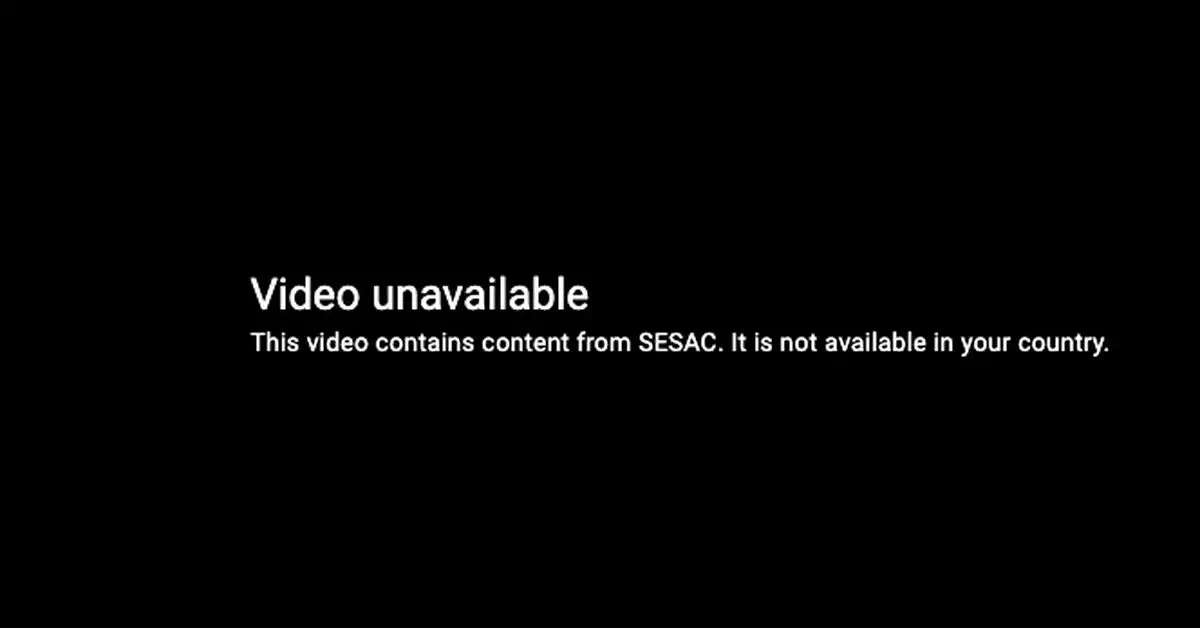In a startling turn of events, an array of popular music videos has vanished from YouTube and YouTube Music, leaving fans puzzled and frustrated. This unexpected alteration has led to an abundance of unanswered questions regarding copyright laws, licensing organizations, and the future of music streaming services amid ongoing negotiations.
The Society of European Stage Authors and Composers (SESAC) is a significant player in the realm of music performance rights. Established in 1930, SESAC has evolved into a major licensing entity, managing the performance rights of over 1.5 million songs on behalf of thousands of affiliated songwriters and music publishers. This organization, though smaller in scale than rivals such as BMI and ASCAP, boasts a roster that includes numerous high-profile artists, such as Kendrick Lamar and Adele. Its recent decision to withdraw content from YouTube underscores the complexities surrounding copyright enforcement and the precariousness of digital music access.
SESAC’s operations, particularly its focus on obtaining fees for public performances, reveal the underlying tensions within the music industry as it adapts to streaming platforms. With the advent of digital reproduction, organizations like SESAC must navigate the shifting landscape of artist rights and revenue generation. Their actions spark a meaningful discourse about the role of such organizations in the future of music access and the streaming economy.
The disappearance of well-loved songs from major artists has raised alarming concerns among music listeners. Affected tracks include some of the most frequently streamed songs on the platform, such as Adele’s “Rolling in the Deep” and Kanye West’s “Power.” The inconsistency in availability—where some listings are inexplicably blocked while others continue to stream—demonstrates the chaotic and opaque nature of music licensing. While SESAC provides a rudimentary searchable database of its repertoire, the lack of transparency prevents users from fully understanding which songs are impacted.
As the digital music space becomes increasingly congested with competing interests, YouTube’s efforts to negotiate a new agreement with SESAC are crucial. YouTube’s spokesperson indicated that negotiations are ongoing, emphasizing their commitment to copyright integrity. However, this situation raises broader questions about the relationships between streaming platforms and licensing organizations, and how disputes like this can disrupt access to cultural products that are often taken for granted.
For devoted fans and casual listeners alike, the removal of tracks from popular streaming platforms is a jarring experience. It highlights the vulnerability of digital access to artistic works, as well as the tense balance between copyright interests and consumer access. While negotiations between rights organizations and streaming platforms are ongoing, the uncertainty of music access creates a significant disadvantage for consumers who seek the immediate gratification that streaming is supposed to provide.
The recent developments serve as a reminder that the accessibility of music is not a foregone conclusion in an industry fraught with regulatory intricacies and commercial objectives. Moving forward, the question remains: how can both sides reconcile interests to protect artists’ rights while ensuring that listeners are not left in the dark? The outcome of this situation may very well pave the way for the future of online music consumption and the evolving roles that licensing organizations will play in it.

